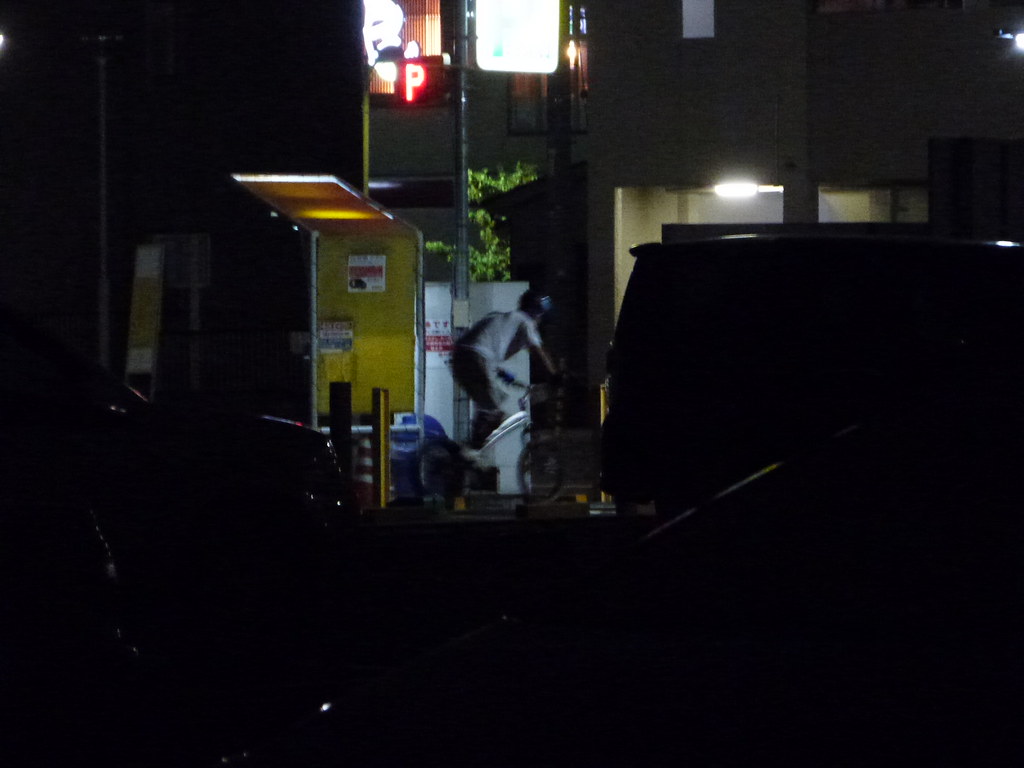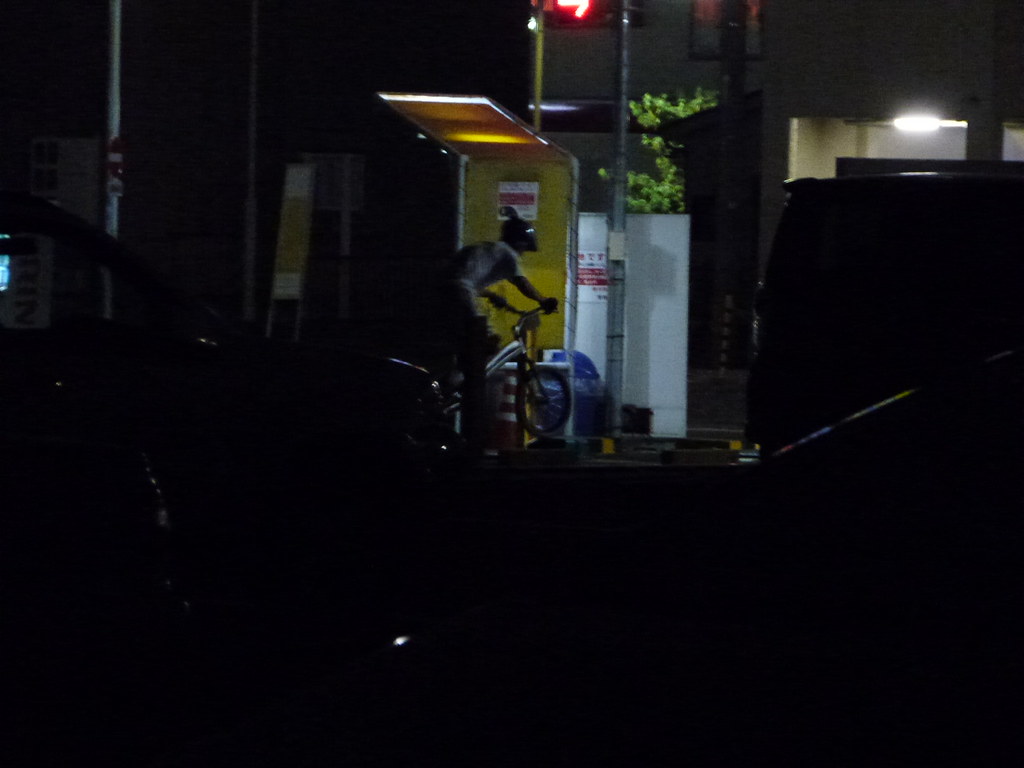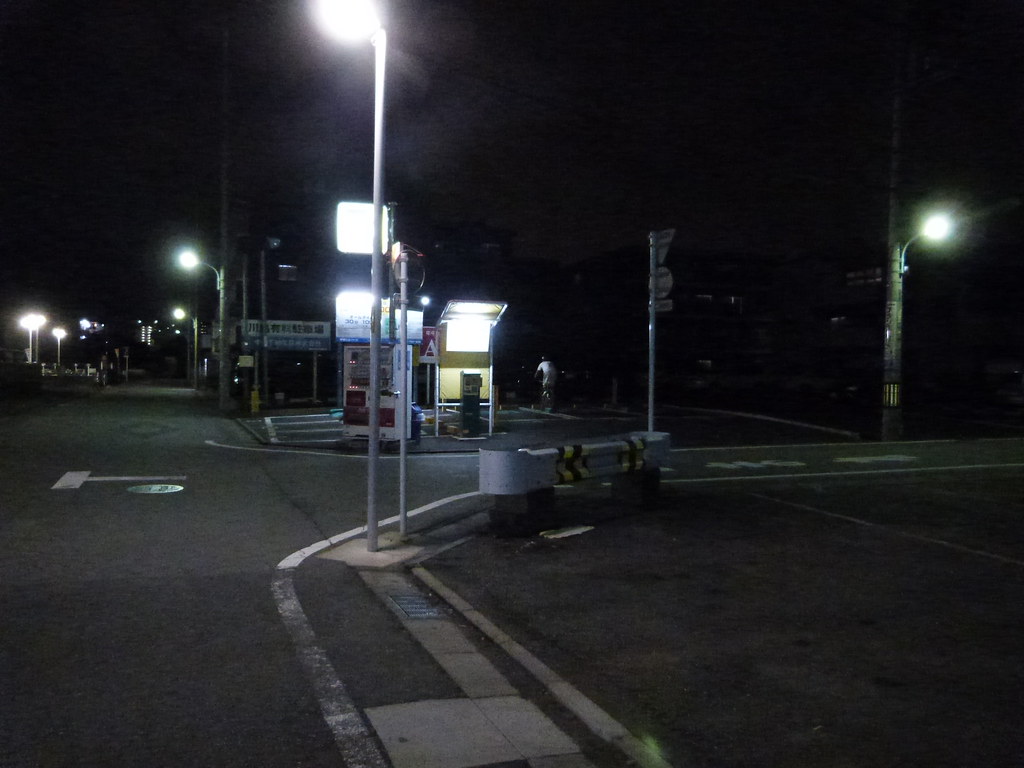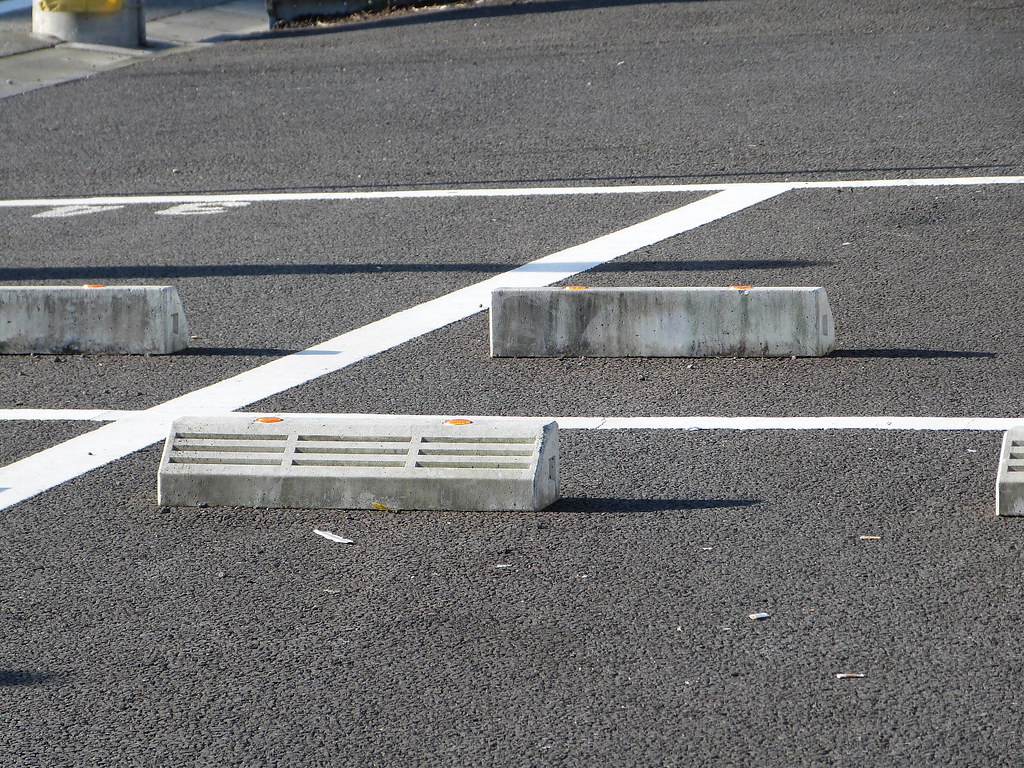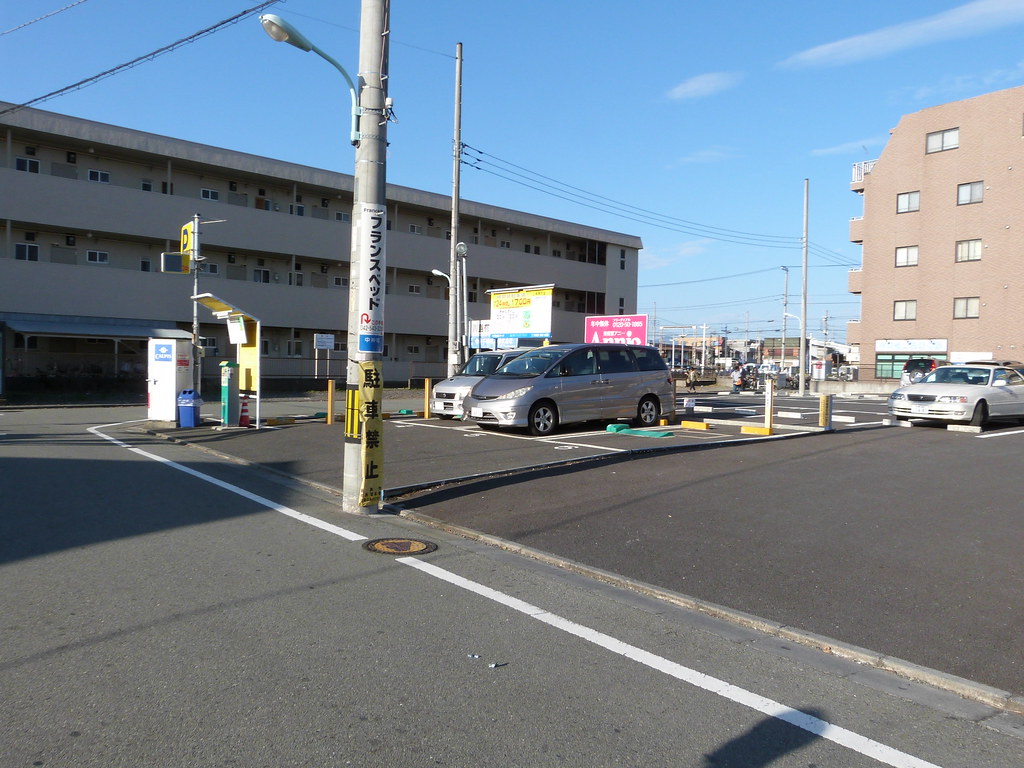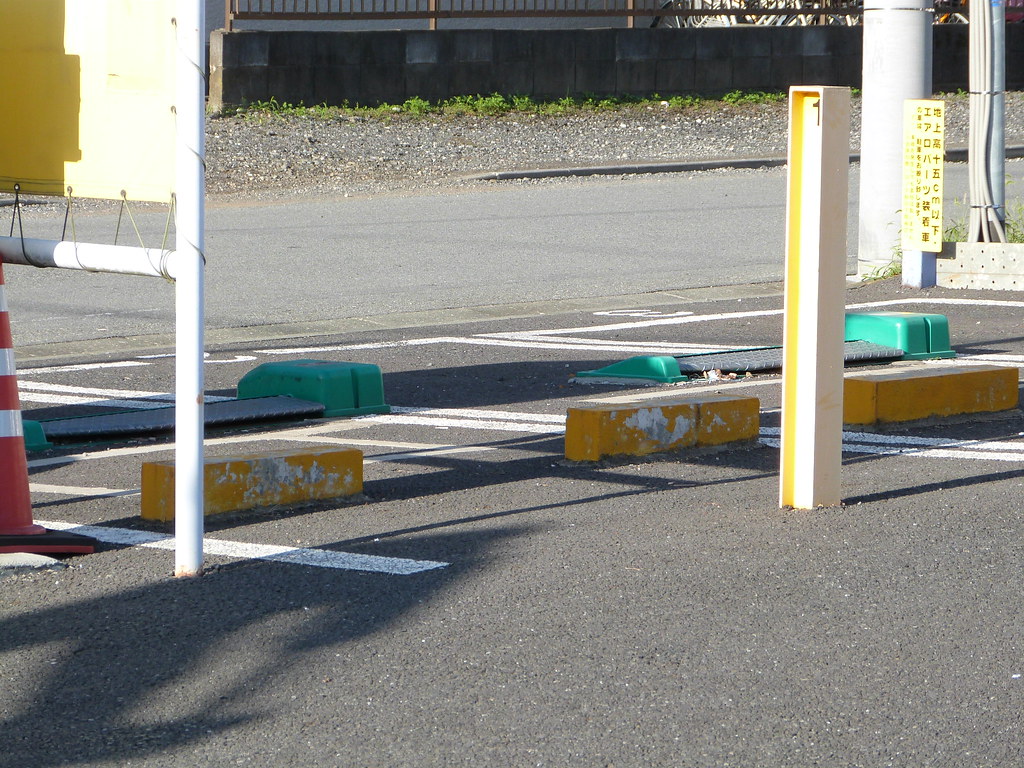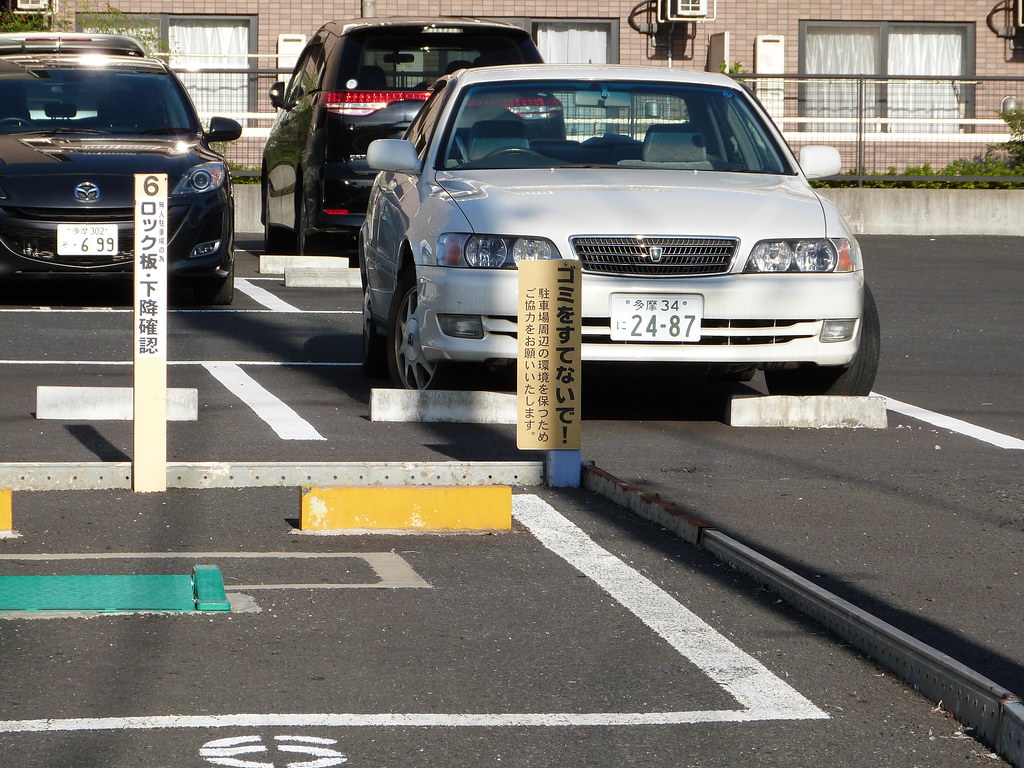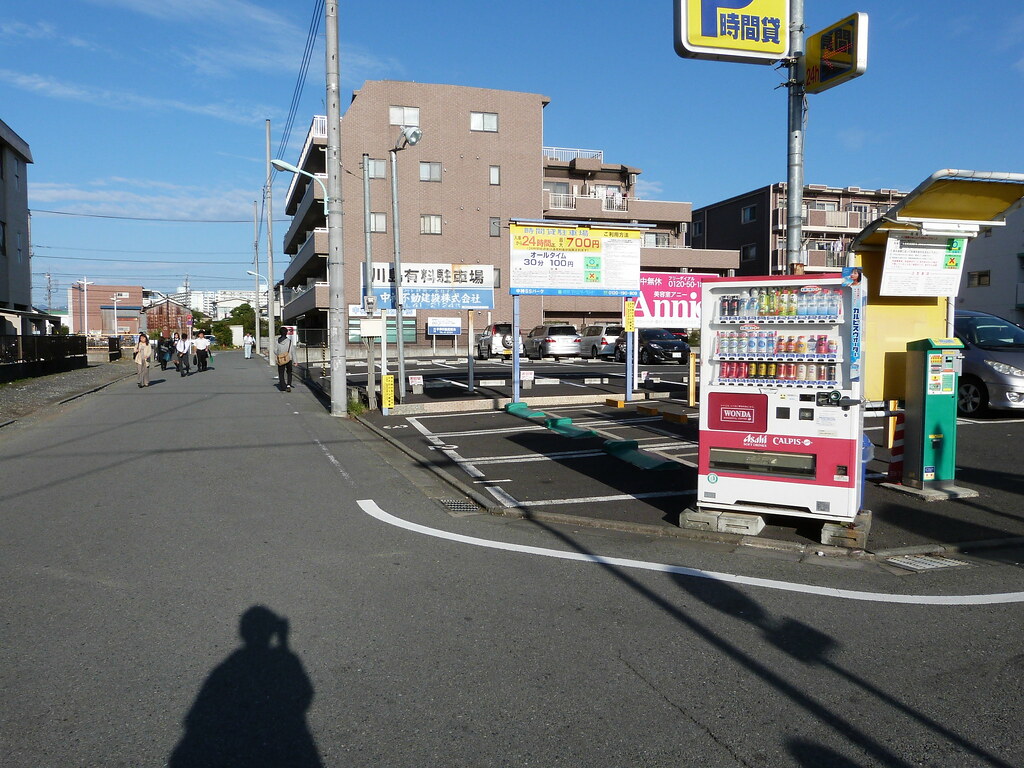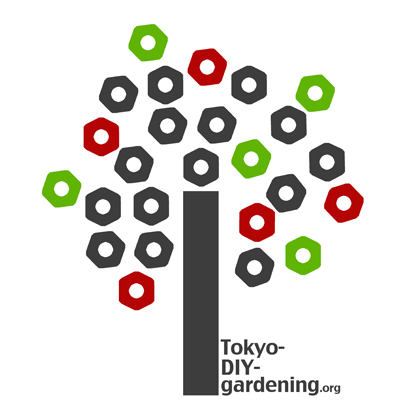Hand made map showing shops and attractions in the center of Nagoya’s shopping district, Sakae.
Various fonts, paper, and hand written annotations, along with fading, wear and tear evoke the temporality of commerce.
I wonder what rules and regulations hold for the those allowed to add to the sign. What are the penalties for unauthorised editing?
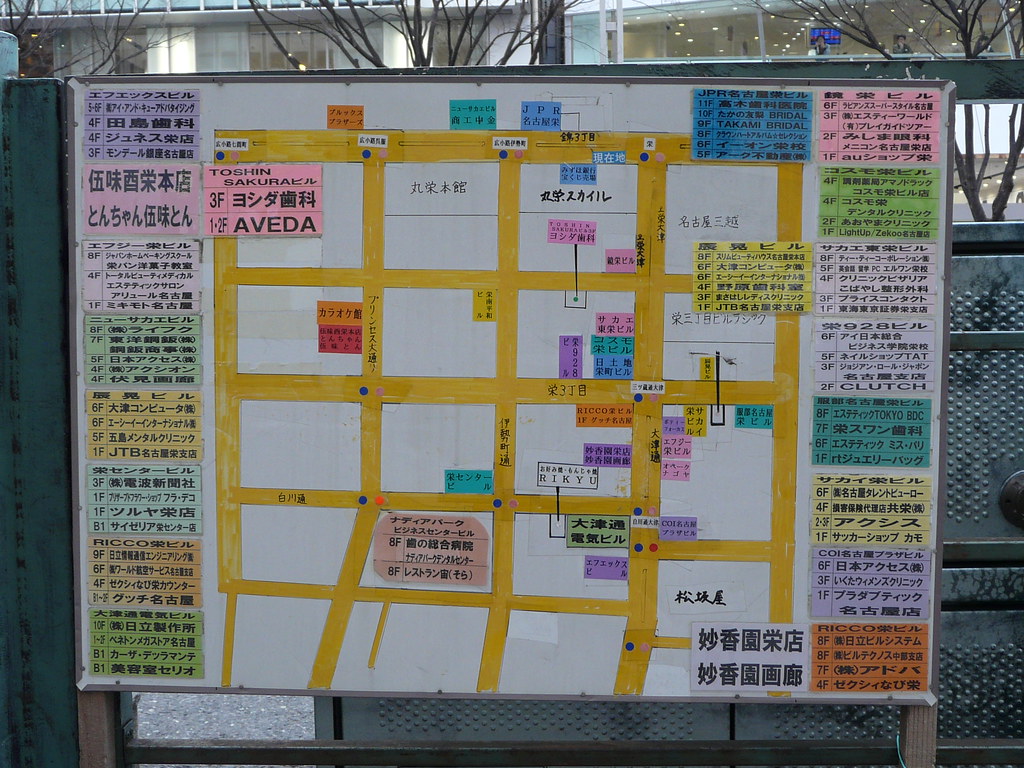

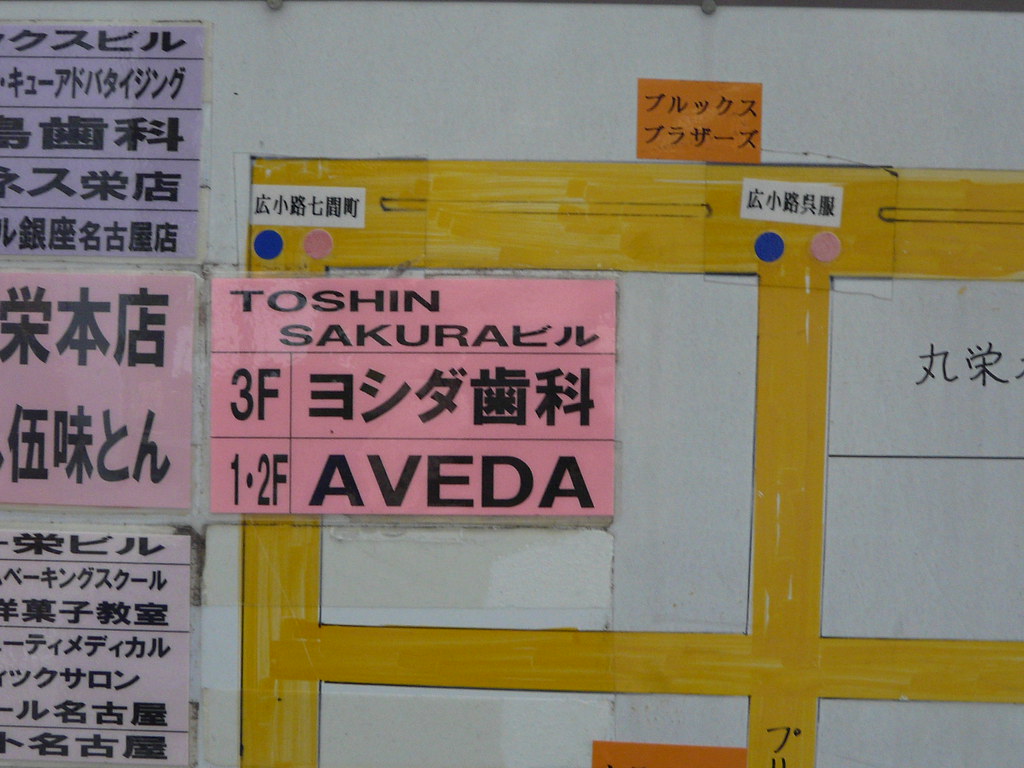
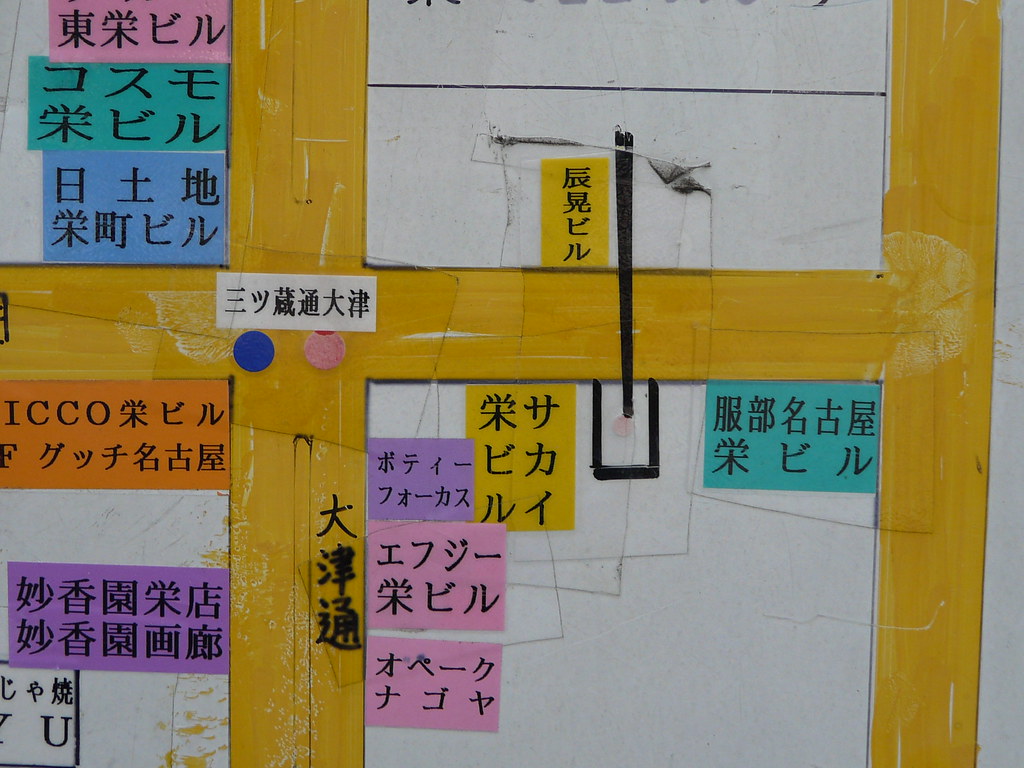
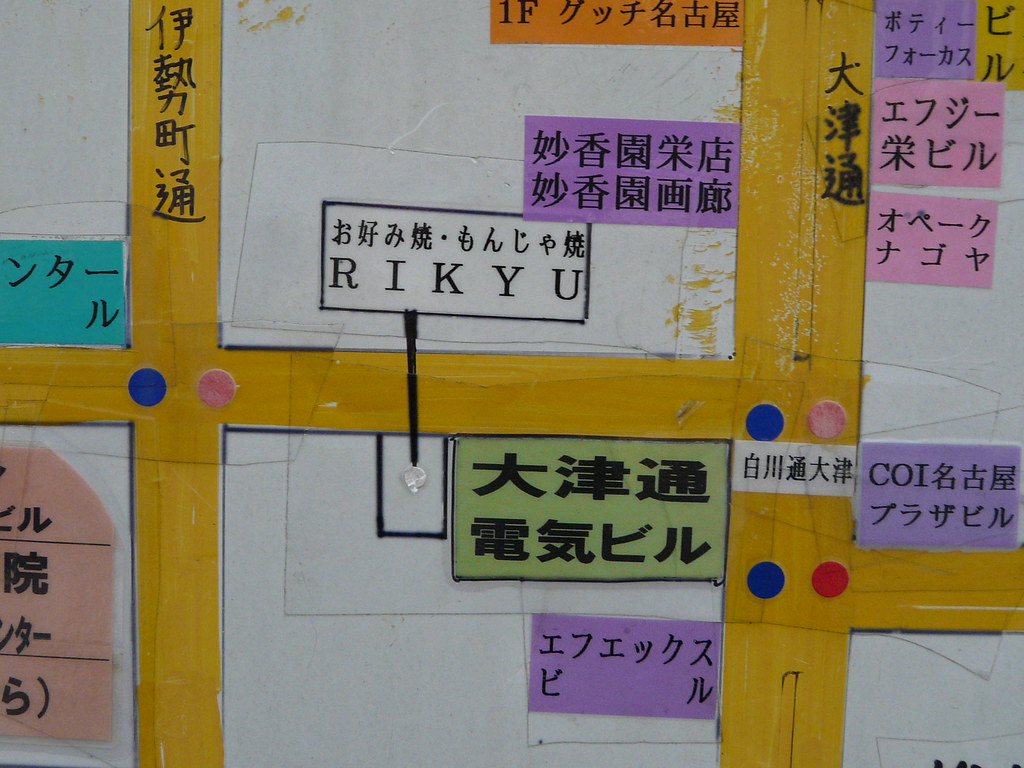
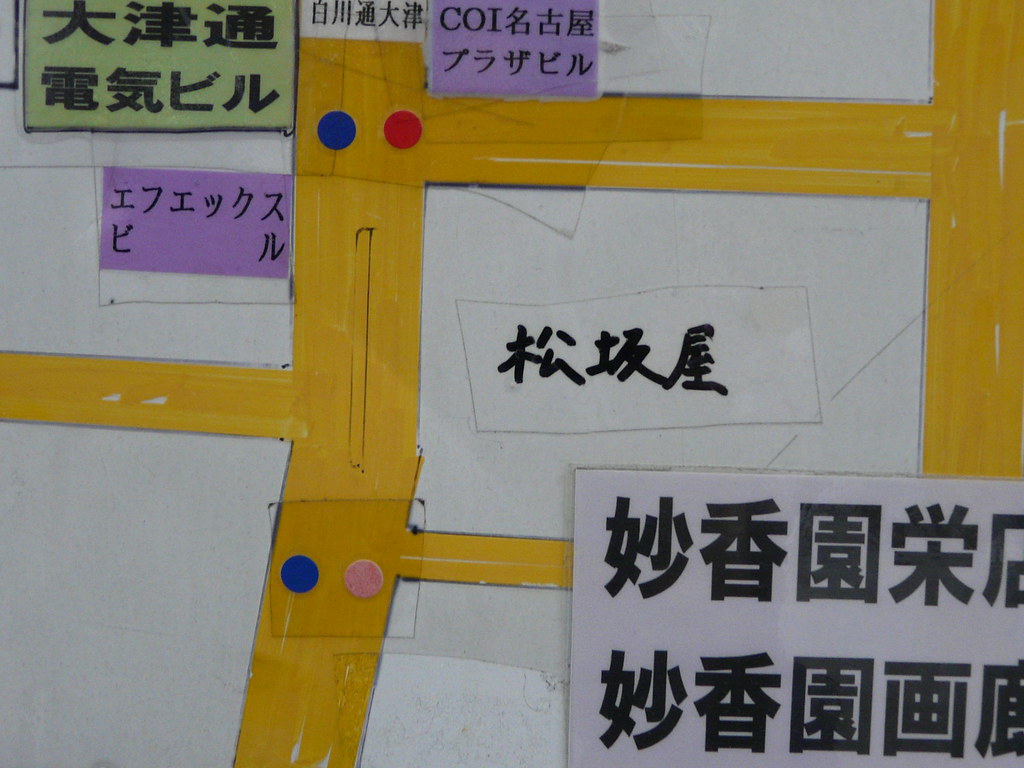
Materials: Paper, Marker, Laminator
Location: Nagoya, Sakae
Cut-off tyres guard against parking mishaps.
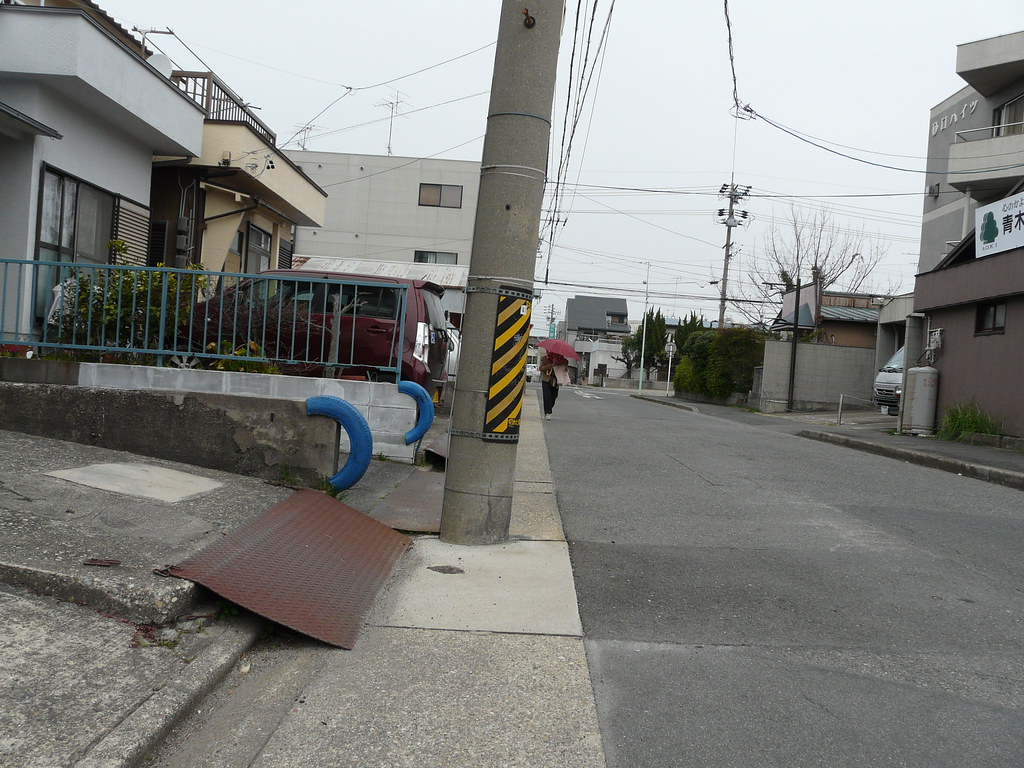
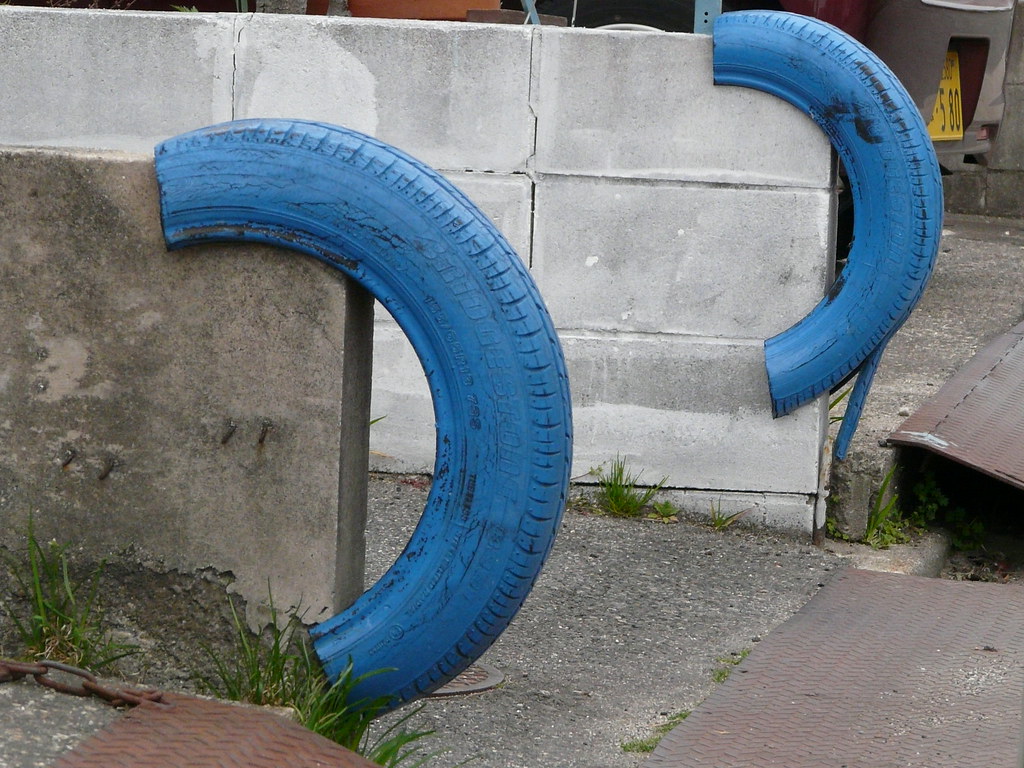


Materials: Tyres
Location: Nagoya
Training by the train tracks. Frugal use of street furniture.
(click image for animated .gif)

Location: Akishima, Tokyo
As noted in Deadspace Parking as BMX Training Course these income-generating asphalt plots become obstacle courses for budding and/or PRO suburban Tokyo BMXers from 12:30am onwards. Tonight as I return in the Dark Hourz I find the same man in a different coin parking space. I wonder whether he moves around to avoid detection or whether these spaces offer a valuable diversity of terrain that I have not before detected….. I need to look at those wheel clamps, judder bars and smooth asphalts more carefully.
Simple hanger made of Tokyo DIY essentials plastic twine and s-hooks (Tokyo’s superglue) keeps onions tasty in early autumn.
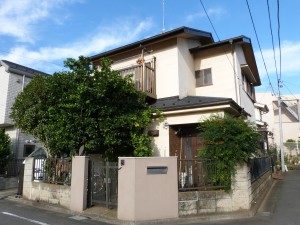

Materials: Plastic Twine, Hooks
Location: Akishima-shi, Tokyo
This village constructed by homeless people took over a large part of Nagoya’s central Shirakawa Koen. As you can see, the defensive wall around the outside of the village was constructed from an array of broken down refrigerators and tree stumps. A very robust set-up that was unfortunately no match for the ‘city beautifiers’ who attempted to destroy what was left of Nagoya’s soul in the run up to the 2005 Aichi Expo.
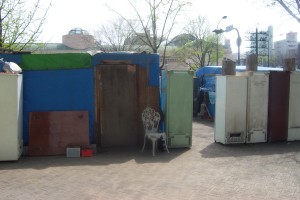
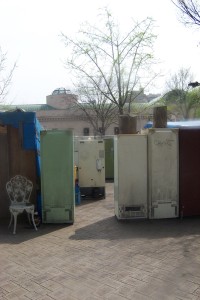
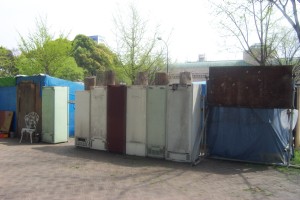
Materials: Refrigerators, Tree stumps
Location: Shirakawa Park, Nagoya
My wife is the poo expert in our house. She is the self-declared ウンチ・ファインダー(Poo Finder). This does not mean that she appreciates it in any way shape or form… imagine her horror to find errant and especially smelly poo in our apartment carpark – a rare and shocking occurence in a city where plastic poo bags are king, and apartment dwellers wipe their pooches bums after every ablution. toilet stop…. It is also very inconvenient as it takes up two bicycle parking spaces in our cramped residential grounds.
This rock construction (made specifically out of white stones for good night visibility) is her attempt at poss-safety (as it was beyond her powers to get close enough to dispose of the offending material).
Look closely at the last photo – I think that these are the offenders. As I was taking these photos they turned the corner, possibily to give us a second bombing… not sure what they have against us, probably our screaming children and wayward terrorist-looking man-about-the-house.
Thanks to Ayu Berthelsen for this great insight into housewife FIXing techniques.
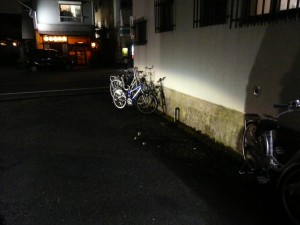
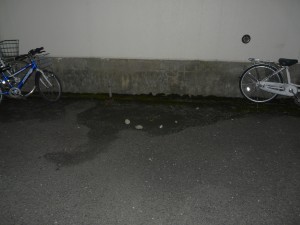
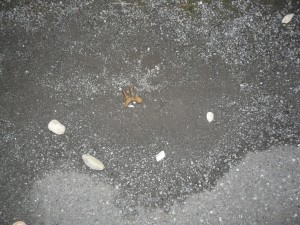
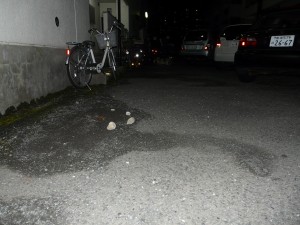
Materials: Rocks
Location: Akishima-shi, Tokyo
Early autumn foraging. Making the city your pantry.
It’s hard to miss the ginan (ginkgo nut) season – stinky parks and boulevards, grimy eldery citizens on their hands and knees across the city. Listening (for once) to my pleading wife I had always refrained from foraging and limited myself to picking up clean nuts from local vege shops and friendly neighbours. Today, emboldened by an off-the-cuff lesson by a local retired tantric meditator and astral spectrum rider (also an expert at losing his pension packet at the races) I picked up a few on the way home from a morning tea at Showa Kinen Koen.
It’s as simple as the yogi assured me. Pick them up, wash them off at home, fry them up while still in their shells, nibble with salt and shochu.
I’m pleased to belatedly add the ginan to my foraging schedule, alongside favourites Mulberry and Tokyo Poppy Seed.





(Originally posted on Tokyo-DIY-Gardening)
(This post is part of our ongoing Tokyo Local Fruit project)
Going through a dusty 2003 hard drive I find this fantastic example of PET bottle-on-bottle planters at a gardening exhibition in Nagoya.
The top image features PVA glue planters. The middle image shows how to create flat floral wreath from 2L PET bottles and sturdy wire. The last image features upright 2L planters, with the fine touch of a bottle-in-bottle construction to store the watering can for the planter-sculpture. I think the cut-away bottle hanging from the bottom is a scoop for soil and fertilizer.



(Originally posted on Tokyo-DIY-Gardening)
Quick notes from memory-infused morning glories
Mr. Kushimoto in Shibuya gives us an early morning lesson in memory-infused gardening (see Personal Impact of Urban Green Space) en-route to breakfast at Knee High Media Japan.
His very ordinary plot of asagao (Morning Glory) links him to his Noh teacher who received the seeds as a gift but had no space to grow them in his tiny apartment and passed them on to Kushimoto. This Noh teacher lives next-door, in an apartment building that was once part of the Kushimoto family estate (now broken up into quarters, and soon to be fragmented further – see e.g. Schematic of scattered land ownership over time in a typical Japanese village).
Mr. Kushimoto used to have a garden that spanned the front of his home, but when his brother turned his inheritance into an income-producing parking lot dirt became scarce – the compromise being the deep concrete planter leading up to the entrance to Kushimoto’s property. This planter proved a more productive spot than the shallow and junky infill soil of the original plot (see last photo).
Now, Mr. Kushimoto lives on the 1st floor of his two-storey house (son and family on 2nd floor) and limits his gardening to decorative asagao, irises and roses – he informs us he has no need for home-grown vegetables because he never learned to cook and his wife passed away a couple of years ago (her name is, however, forever etched on the mailbox plate).
The asagao blooms in the morning, withers by afternoon and goes to seed soon after (a process very lovingly described by Kushimoto) (see second to last photo). I love the mix of intergenerational property metamorphosis, spousal memorial, ongoing teacher-student friendship and loyalty, long-term attention to soil quality and daily change brought out in this simple early morning encounter.





(Originally posted on Tokyo-DIY-Gardening.org)
Secondary storage. Storing your umbrella on your bicycle means you are always weather-prepared.

Location: Setagaya, Tokyo.
This example is a note for a pamphlet on “Hand Made Aspects of Mass Produced Housing”. Subscribe to my somewhat-frequent letter HERE if you want to keep in touch easily.
Secondary storage. Shopping bags stored in bicycle basket.
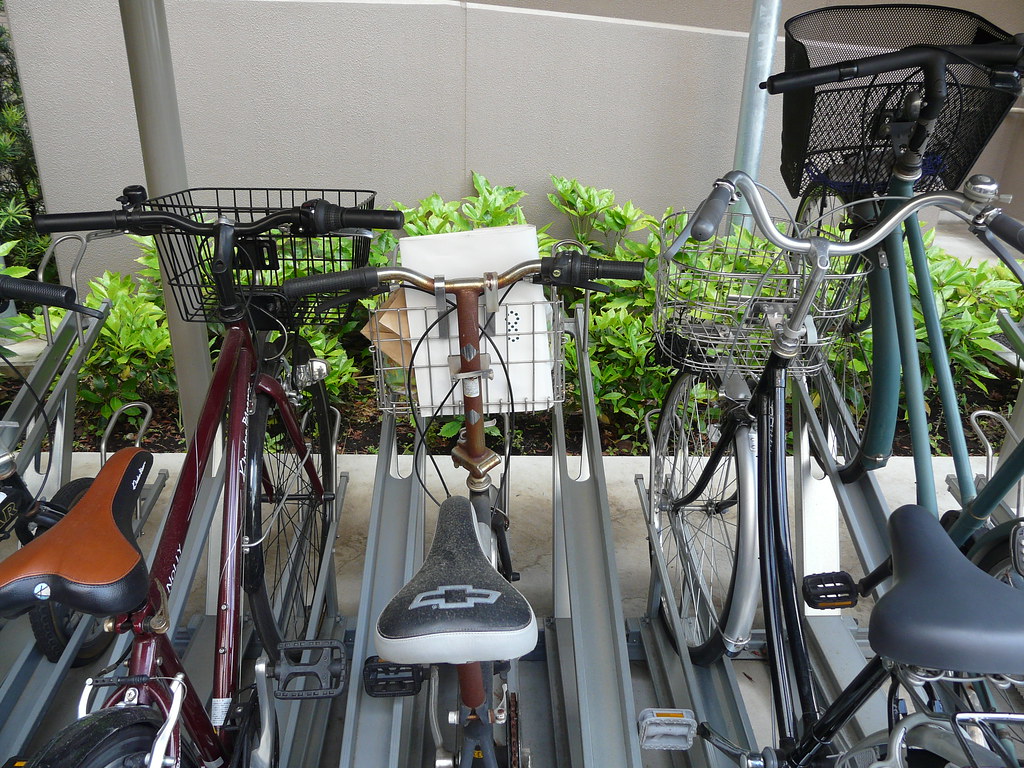
Location: Setagaya, Tokyo.
This example is a note for a pamphlet on “Hand Made Aspects of Mass Produced Housing”. Subscribe to my somewhat-frequent letter HERE if you want to keep in touch easily.
Laminated sign cautions pet owners to clean up after their loved ones doings.
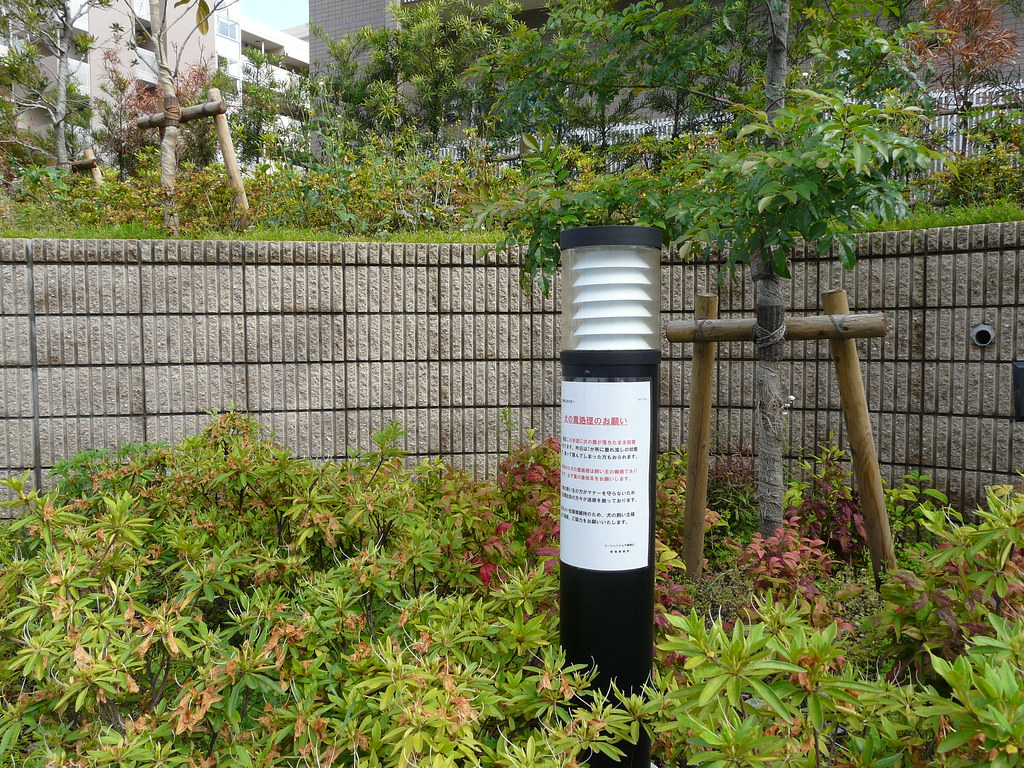
Materials: Laminated Sign
Location: Setagaya, Tokyo.
This example is a note for a pamphlet on “Hand Made Aspects of Mass Produced Housing”. Subscribe to my somewhat-frequent letter HERE if you want to keep in touch easily.
Secondary storage. Bicycle cover is stored wrapped around parking port post when not in use.
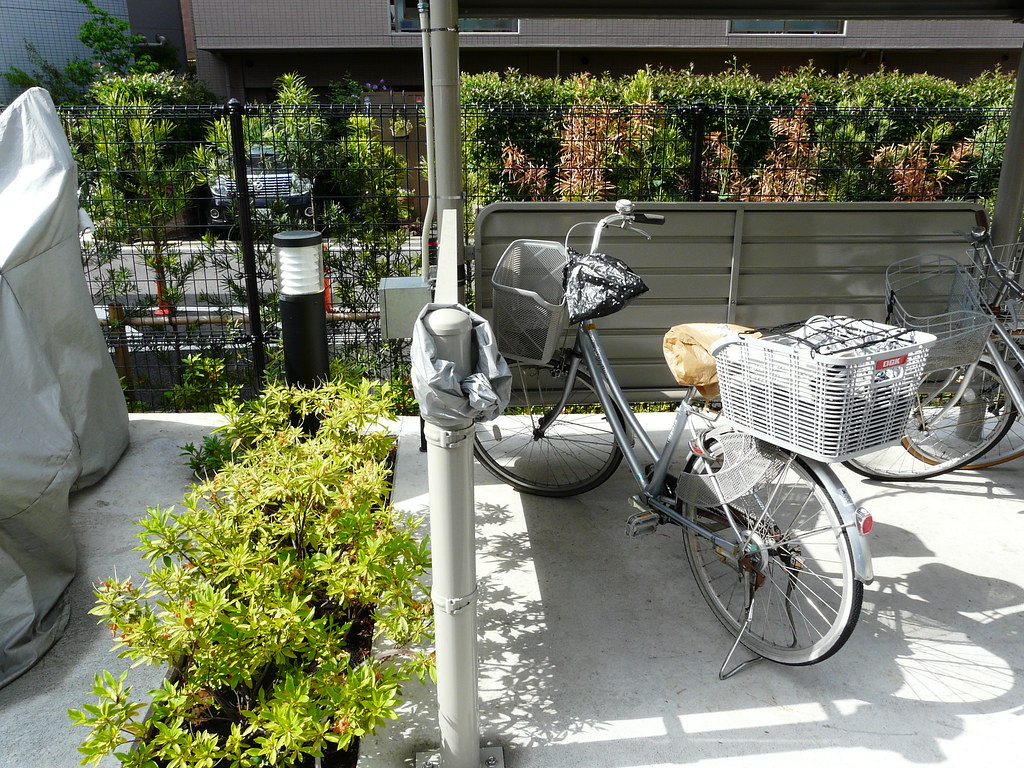

Location: Setagaya, Tokyo.
This example is a note for a pamphlet on “Hand Made Aspects of Mass Produced Housing”. Subscribe to my somewhat-frequent letter HERE if you want to keep in touch easily.
Extra security by chaining bicycle to parking structure. Uncommon.
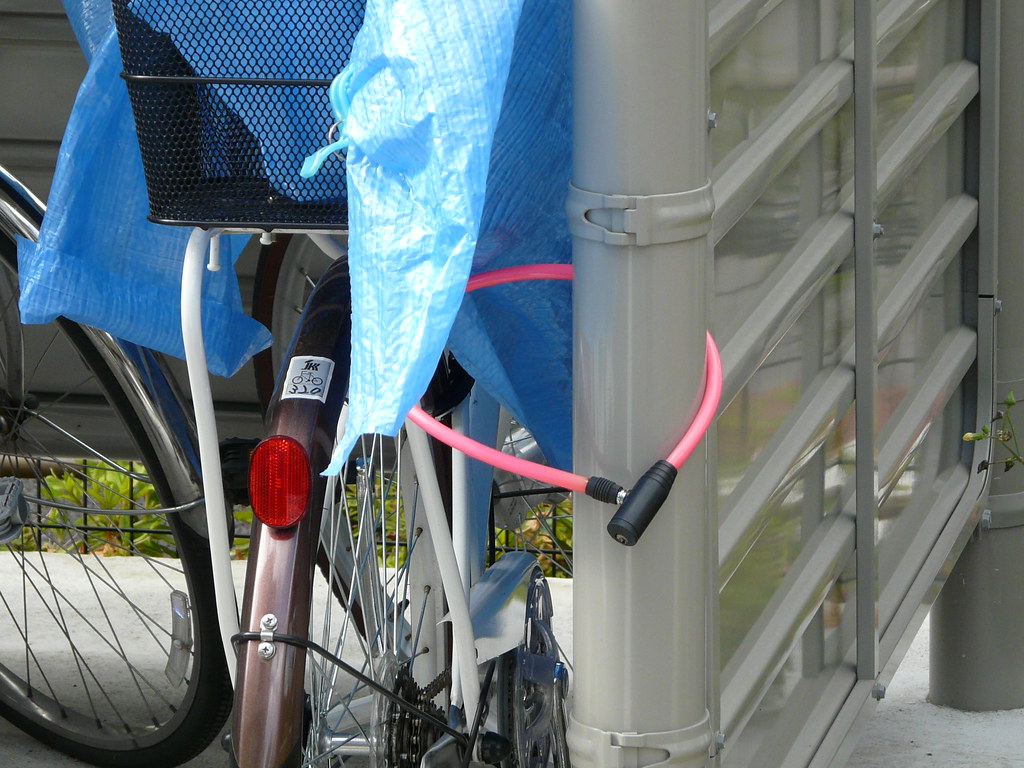
Location: Setagaya, Tokyo.
This example is a note for a pamphlet on “Hand Made Aspects of Mass Produced Housing”. Subscribe to my somewhat-frequent letter HERE if you want to keep in touch easily.
Perhaps these residents park their bikes further into the parking structure than planned (notice the front wheels over the back pole) to (1) keep their seats dry and/or (2) allow more room for thoroughfare.
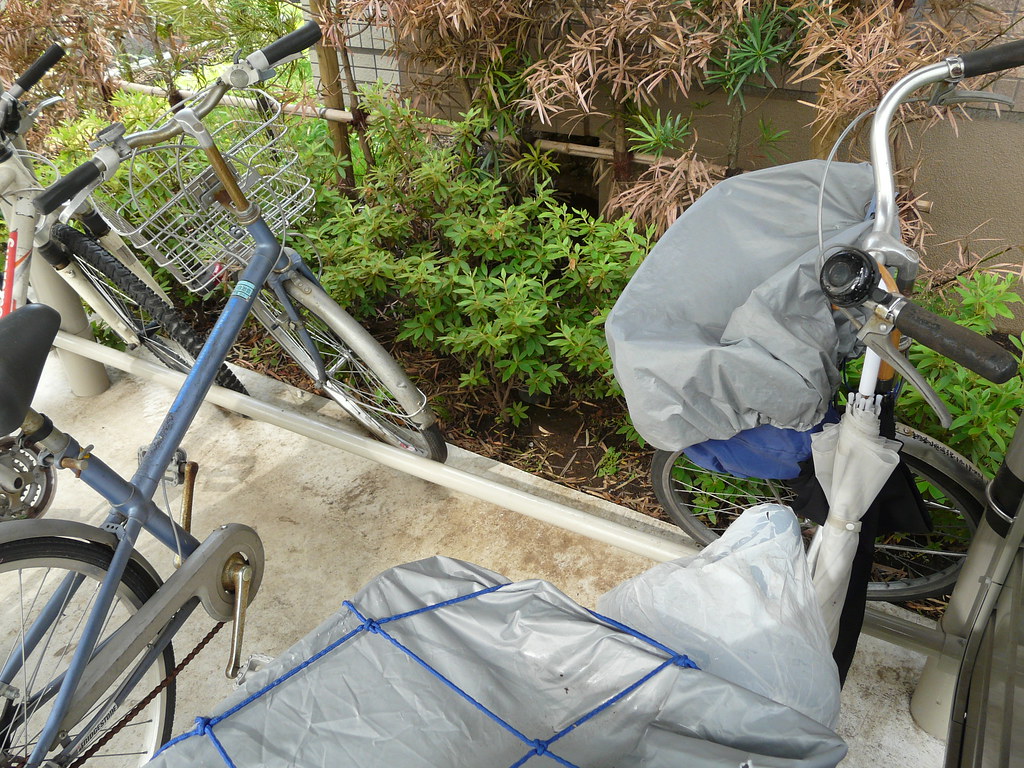
Location: Setagaya, Tokyo.
This example is a note for a pamphlet on “Hand Made Aspects of Mass Produced Housing”. Subscribe to my somewhat-frequent letter HERE if you want to keep in touch easily.
All apartments are fitted with built-in washing lines which are below the line of the railing. Unfortunately, these are too low, meaning that sheets and futons have to be hung carefully to prevent them from resting on the balcony floor. This resident has erected his own (more common style of) washing line at a more practical height.

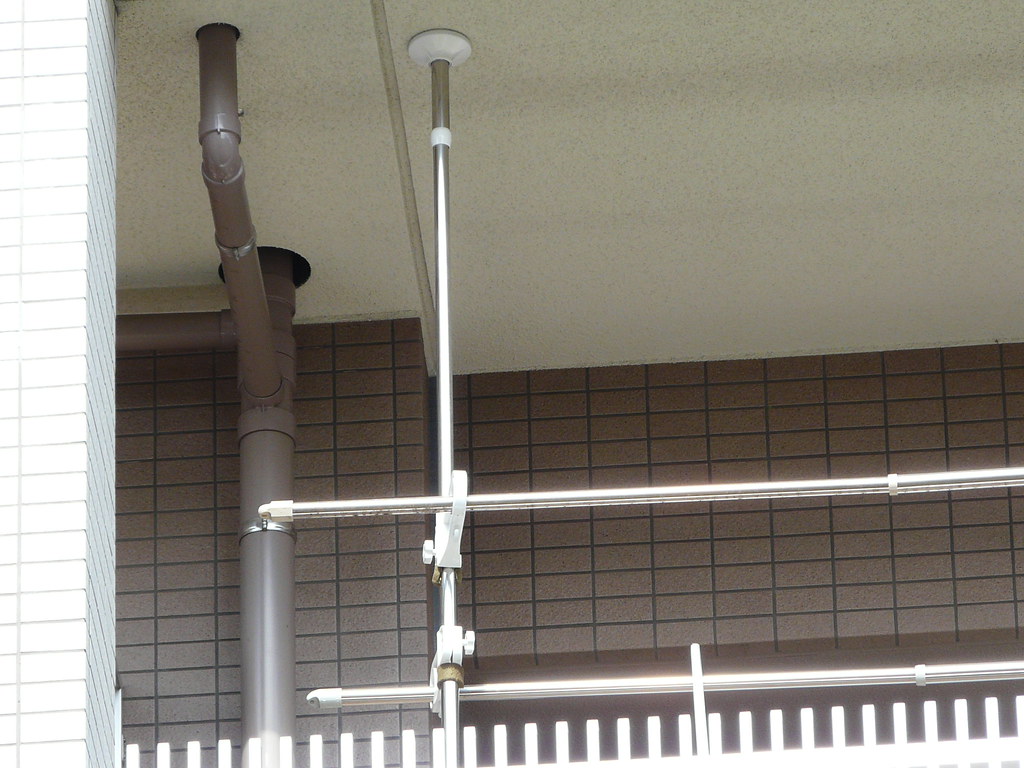
Location: Setagaya, Tokyo.
This example is a note for a pamphlet on “Hand Made Aspects of Mass Produced Housing”. Subscribe to my somewhat-frequent letter HERE if you want to keep in touch easily.
When burning eyes threaten to fail, extreme zooming is the key to completing Google Spreadsheets work.
Sometimes you just can’t find the energy to escape, and palliative measures are the only way to go…….
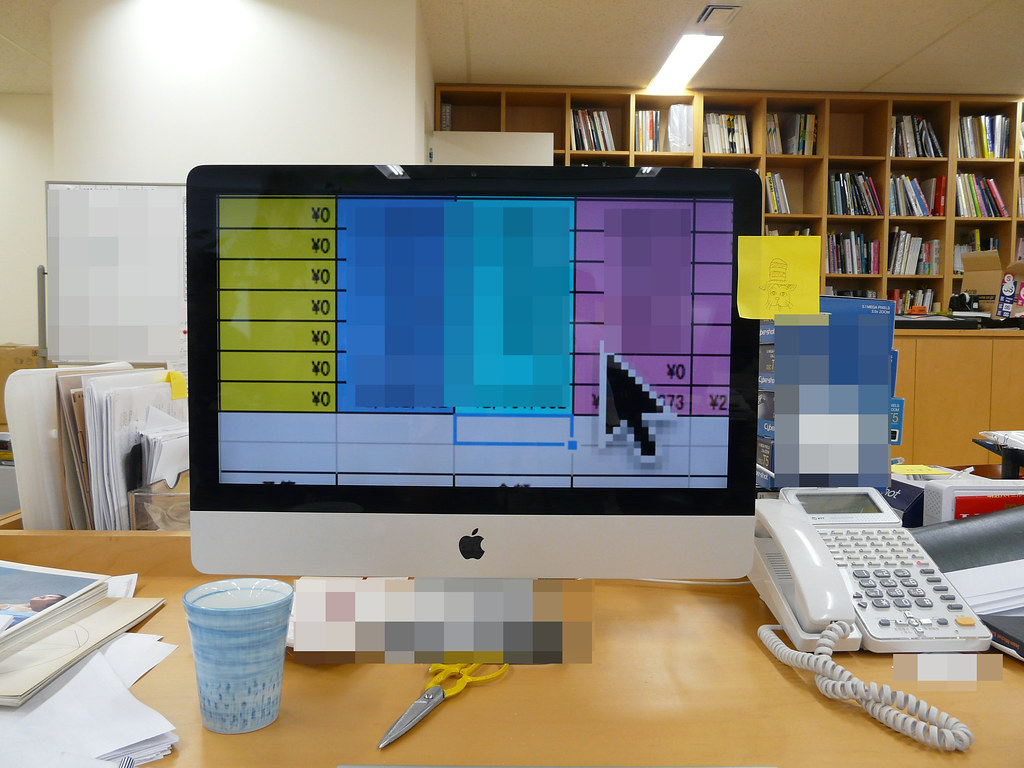
Location: Shibuya, Tokyo
Offices are a desert when it comes to proper cooking and preparation equipment. Office staff are reduced to cutting their convenience store fake bread with rulers (keep the bread in the plastic bag to keep the ruler/knife clean) when preparing a quick morning tea.
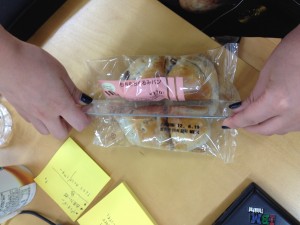
Materials: Ruler
Location: Shibuya, Tokyo












